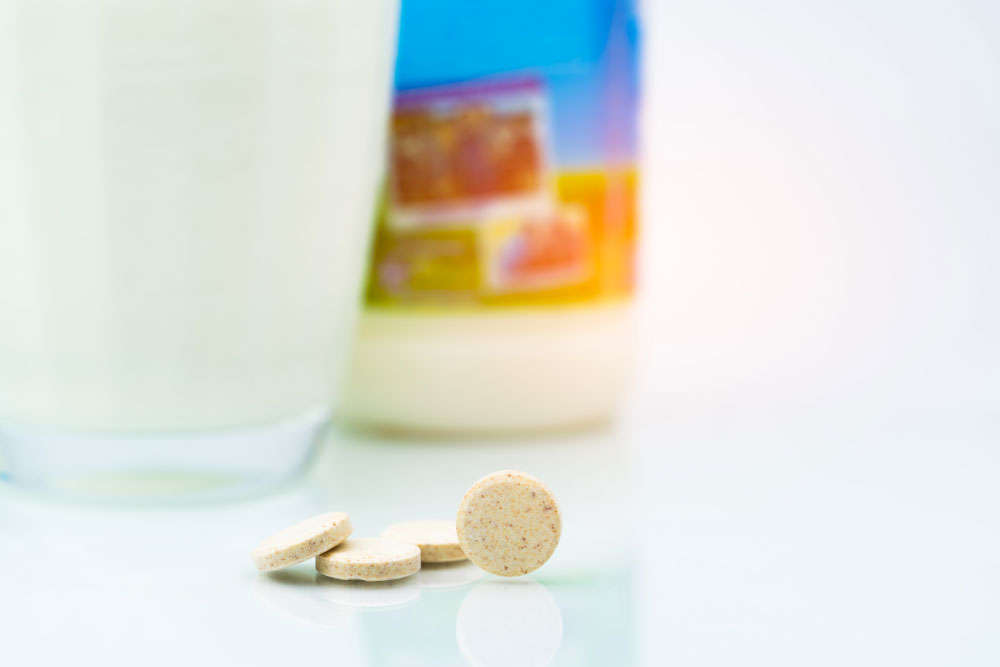Why You Should Avoid Dairy with Antibiotics
When you’re prescribed antibiotics, your doctor or pharmacist might give you a few important instructions—one of which could be to avoid dairy. But why? If milk is supposed to be good for you, why does it interfere with certain medications? Let’s break it down.
How Dairy Affects Antibiotic Absorption
Dairy products, such as milk, cheese, and yogurt, contain high levels of calcium and other minerals like magnesium. Some antibiotics, especially those in the tetracycline and fluoroquinolone families, bind to these minerals in your digestive system. When this happens, the antibiotic forms an insoluble complex, making it harder for your body to absorb the medication properly (U.S. National Library of Medicine, 2021).
This can lead to reduced effectiveness of the antibiotic, meaning it won’t work as well to fight the infection (FDA, 2016).

Which Antibiotics Are Affected by Dairy?
While not all antibiotics interact negatively with dairy, the following are some of the most common ones that do:
- Tetracyclines (e.g., Doxycycline, Tetracycline, Minocycline) – These antibiotics bind with calcium, significantly reducing their absorption and effectiveness (Lexicomp, 2023).
- Fluoroquinolones (e.g., Ciprofloxacin, Levofloxacin, Moxifloxacin) – Calcium, magnesium, and iron in dairy can interfere with these antibiotics, making them less effective (MedlinePlus, 2022).
Macrolides (e.g., Erythromycin, Azithromycin, Clarithromycin) – While dairy doesn’t necessarily block absorption, it can irritate the stomach, leading to discomfort and nausea (Mayo Clinic, 2023).

How Long Should You Wait Between Dairy and Antibiotics?
If you’re taking one of the above antibiotics, it’s usually best to avoid consuming dairy products for at least two hours before or after taking your medication (FDA, 2016). This allows time for the antibiotic to be absorbed into your bloodstream before dairy can interfere.

Are Probiotic Yogurts an Exception?
Many people take probiotic-rich dairy products, like yogurt, to help restore good gut bacteria after a course of antibiotics. While this can be beneficial, timing is important. If you want to consume probiotic yogurt, do so at least two hours apart from your antibiotic to avoid interference (Cleveland Clinic, 2020).

What About Dairy Alternatives?
If you love milk in your coffee or cereal, you might be wondering if plant-based alternatives like almond, soy, or oat milk are safe. The good news is that most non-dairy alternatives do not contain calcium in amounts high enough to affect antibiotic absorption. However, always check labels, as some are fortified with calcium (National Institutes of Health, 2022).

Final Thoughts
While dairy is an essential part of many diets, it’s best to be mindful when taking antibiotics. Always follow your doctor’s or pharmacist’s advice regarding food and medication interactions. If in doubt, space out dairy consumption from your antibiotic dose to ensure you get the full benefit of your medication.
Still unsure? Ask your pharmacist at iCare Pharmacy—because when it comes to your health, it’s always better to be safe than sorry!
References
Cleveland Clinic. (2020, October 13). Can I take probiotics and antibiotics at the same time? https://health.clevelandclinic.org/can-i-take-probiotics-and-antibiotics-at-the-same-time/
FDA. (2016). Drug interactions: What you should know. U.S. Food and Drug Administration. https://www.fda.gov/drugs/resources-you-drugs/drug-interactions-what-you-should-know
Lexicomp. (2023). Doxycycline: Drug information. Wolters Kluwer. Retrieved from https://www.wolterskluwer.com/en/solutions/lexicomp
Mayo Clinic. (2023). Erythromycin (oral route) precautions. https://www.mayoclinic.org/drugs-supplements/erythromycin-oral-route/precautions/drg-20070549
MedlinePlus. (2022). Ciprofloxacin. U.S. National Library of Medicine. https://medlineplus.gov/druginfo/meds/a688016.html
National Institutes of Health. (2022). Calcium: Fact sheet for health professionals. https://ods.od.nih.gov/factsheets/Calcium-HealthProfessional/
U.S. National Library of Medicine. (2021). Tetracycline. https://pubchem.ncbi.nlm.nih.gov/compound/Tetracycline




